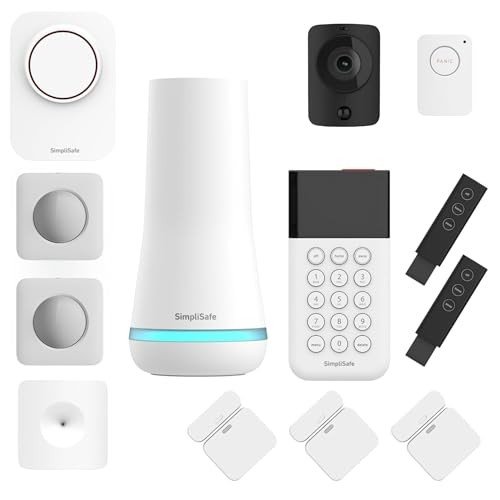Contemporary Lighting in the UK: Transforming Spaces with Illumination
Lighting plays an essential role in defining the ambiance and functionality of any area. In the UK, contemporary lighting has actually become a considerable design aspect, providing innovative services that blend aesthetics with usefulness. This post dives into the numerous designs, materials, and innovations shaping contemporary lighting, along with tips for selecting the most suitable fixtures for different settings.
The Evolution of Contemporary Lighting
Contemporary lighting in the UK reflects the changing tastes and technological developments in style. It encapsulates a wide array of designs, consisting of:
- Minimalist: Characterized by simpleness and clean lines, minimalist lighting fixtures focus on form and function without unneeded decorations.
- Industrial: Inspired by metropolitan settings, industrial lighting combines basic materials like metals and woods with strong designs, creating edgy, practical pieces.
- Scandinavian: Known for its warmth and simpleness, Scandinavian lighting often features soft colors and natural materials, focusing on developing a cozy environment.
- Smart Lighting: This modern pattern integrates innovation with style, enabling users to manage their lighting with mobile apps, voice commands, or automation systems.
To illustrate the advancement and range in the field of contemporary lighting, consider the table below, which highlights crucial qualities of different designs.
| Design | Key Characteristics | Popular Materials | Perfect Spaces |
|---|---|---|---|
| Minimalist | Basic, practical designs | Metal, glass, wood | Modern homes, offices |
| Industrial | Raw, unfinished appearance | Steel, concrete, wood | Lofts, galleries |
| Scandinavian | Comfortable, warm aesthetics | Natural fibers, light wood | Living rooms, coffee shops |
| Smart | Integrated technology, automation | Varies widely | Houses, offices, retail areas |
Choosing Contemporary Lighting Fixtures
Choosing the right lighting fixtures for an area needs mindful factor to consider of several elements. Here are key aspects to remember:
1. Function of the Space
Before choosing fixtures, think about the desired usage of the area. Various functions require various kinds of lighting:
- Task Lighting: Focused illumination for activities such as reading, cooking, or studying. Examples consist of table lamps and under-cabinet lights.
- Ambient Lighting: General lighting that provides total illumination. Ceiling lights and pendant fixtures fall under this classification.
- Accent Lighting: Designed to highlight particular features or areas, such as art work or architectural details. Wall sconces and mounted lights are common options.
2. Design and Theme
The lighting must complement the existing design. Choose for fixtures that match or enhance the overall theme of the area, whether it's contemporary, rustic, or eclectic.
3. Size and Scale
Think about the percentage of the lighting fixtures relative to the space. A big chandelier might look stunning above a roomy dining table, while smaller sized pendant easy work well in compact settings.
4. Energy Efficiency
With rising energy expenses and environmental issues, picking energy-efficient lighting alternatives is important. LED lights are an outstanding choice, using durability and lower energy consumption.
5. Flexibility
In modern design, versatility is essential. Fixtures that can be adjusted or rearranged enhance functionality, permitting users to produce different environments as needed.
Popular Contemporary Lighting Brands in the UK
The contemporary lighting market in the UK boasts various brand names understood for their ingenious designs and quality workmanship. Some significant discusses include:
- FLOS: An Italian brand name commemorated for its artistic and iconic light fixtures that often double as art pieces.
- Tom Dixon: A British designer acknowledged for his modern, industrial styles that perfectly incorporate metal and light.
- Anglepoise: Known for its flexible, practical lamps, perfect for a range of settings from home offices to creative studios.
- John Lewis: Offers a variety of contemporary lighting solutions that accommodate a more comprehensive audience, consisting of affordable yet trendy choices.
FAQs about Contemporary Lighting in the UK
1. What is contemporary lighting?
Contemporary lighting refers to lighting styles and fixtures that show present style trends, frequently defined by tidy lines, ingenious shapes, and making use of modern products and innovations.
2. How do next page choose the best lighting for my home?
Think about the function of the room, existing decoration, size of fixtures, energy efficiency, and versatility. Assess how each piece will add to the overall ambiance and performance of your space.
3. What are some energy-efficient lighting choices readily available in the UK?
LED lights are the most popular energy-efficient option, understood for their long life expectancy and low energy intake. Compact fluorescent lights (CFLs) and halogen bulbs are other options.
4. Where can I purchase contemporary lighting in the UK?
Contemporary lighting can be found in various retail outlets, both online and in physical stores. Notable merchants consist of John Lewis, Habitat, and specialized lighting shops.
5. Can contemporary lighting work in traditional spaces?
Absolutely! Contemporary lighting can enhance traditional areas when chosen attentively. Selecting fixtures with a balance between modern and classic aspects can produce an unified style.
Contemporary lighting in the UK represents more than just lighting; it embodies style innovation and imagination, changing areas and improving functionality. As patterns continue to evolve, house owners and designers alike can explore an expansive series of designs and innovations, making sure that every room bursts with life, warmth, and character. By considering the essential factors outlined in this post, one can curate a collection of lighting fixtures that resonates with personal design and meets practical requirements, ultimately shaping comfy and visually attractive environments.

